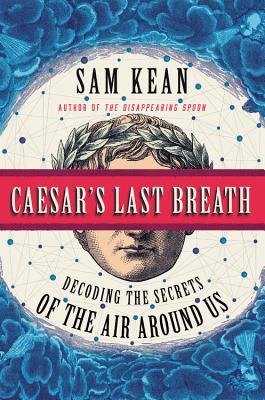
Caesar's Last Breath
Decoding the Secrets of the Air Around Us
کتاب های مرتبط
- اطلاعات
- نقد و بررسی
- دیدگاه کاربران
نقد و بررسی

May 15, 2017
Kean (The Tale of the Dueling Neurosurgeons) pumps chemical and historical trivia into this tale about air and the gases of which it is composed. His style ranges from buoyant to jittery and he bounces ideas around as though they were ping-pong balls. Math buffs may enjoy determining how many calories it takes to vaporize a human body or how many oxygen molecules a human needs every 24 hours; other readers will content themselves with trying to decipher the chemical breakdown of their next breath. The air in that breath, Kean points out, is nearly as old as the Earth and includes not only traces of Caesar’s last exhalation but traces of every gas-emitting being or thing on the planet—including volcanoes, bombs, farms, and restaurant kitchens. While discussing the gases of which air is composed, Kean describes many relevant engineering feats, such as the steam engine, synthetic fertilizer, anesthesia, dynamite, steel production, the hot-air balloon, and more. He provides historical vignettes about such phenomena as spontaneous combustion and the first bank robbery done via blowtorch. Kean also considers how the relationship between humans and air has changed in the era of nuclear power, refrigeration, space exploration, and global warming. The result is a hodgepodge of ephemera that is lightweight and entertaining. Agent: Rick Broadhead, Rick Broadhead & Assoc.

May 15, 2017
A witty book that turns the science of the stuff we breathe into a delightful romp through history.Kean (The Tale of the Dueling Neurosurgeons: The History of the Human Brain as Revealed by True Stories of Trauma, Madness, and Recovery, 2014, etc.), an award-winning science writer whose previous books may have sounded off the wall but tackled serious subjects, has done it again, using his free-wheeling style to translate hard scientific facts into lively stories. He divides the narrative into three sections, the first of which examines the origins of the air on our planet. Here, we learn about the contribution of volcanic eruptions, including a diverting piece on one unfortunately stubborn resident of Mount Saint Helens, the eruption of which served as "the greatest geology lesson in American history." In the second section, Kean takes up the various components of air, starting with the major one, nitrogen, and concluding with the much rarer helium and the noble gases. Here, each chapter explores how human beings have exploited the different gases, which gives the author the opportunity to tell more entertaining stories, including ones about anesthesia and ballooning. In the third section, Kean takes a look at recent changes in the composition of our air and at the significance of the atmospheres of other planets. Of special interest, however, are the interspersed sections called "Interludes," in which the author tells related human interest anecdotes--e.g., an exploding lake in Cambodia, a failed bank robbery in Germany, spontaneous combustion of humans, and the special talents of Le Petomane, a highly paid "fartiste" at the Moulin Rouge. Kean cannot resist sharing other gems he uncovered in his research, and readers will appreciate them. For these, see the back-of-the-book section, "Notes and Miscellanea." Some are priceless. Great fun for general readers curious about our world and an especially appropriate gift for a young person considering a career in the sciences.
COPYRIGHT(2017) Kirkus Reviews, ALL RIGHTS RESERVED.

February 15, 2017
As New York Times best-selling science writer Kean explains, the air around us, which we so cheerfully take for granted, has quite a history. Of the sextillions of air molecules you breathe in while reading this sentence, some may have been breathed out by a dying Julius Caesar or by dinosaurs eons ago. What's air made of, and how did it all start? With a 75,000-copy first printing.
Copyright 2017 Library Journal, LLC Used with permission.

June 1, 2017
At the beginning of best-selling Kean's (The Tale of Dueling Neurosurgeons, 2014) exploration of the intricacies of air, he asks readers to consider the fanciful but strong likelihood that everyone now living is inhaling traces of Julius Caesar's last breath, expelled when his assassins administered the fatal knife blow more than 2,000 years ago. In fact, given the endlessly circulatory nature of our atmosphere and the trillions of molecules comprising it, our lungs are also filtering microscopic particles of everything from dinosaur exhalations to the CO2 currently heating up the planet. Yet these startling truths are just a warm-up for the author's comprehensive study of all the gases that keep us alive, including not only breathable oxygen but also the more toxic varieties that paradoxically nurtured Earth's first life-forms. In three richly informative sections, the author describes early prehuman atmospheres, reviews mankind's use of gases to advance civilization, and looks at how air chemistry has changed in the last few hundred years. Once again, Kean proves his mettle as one of science literature's most gifted practitioners.(Reprinted with permission of Booklist, copyright 2017, American Library Association.)

























دیدگاه کاربران